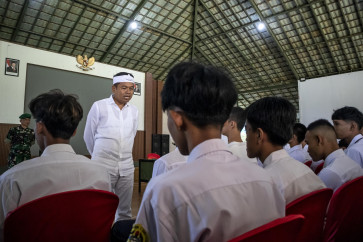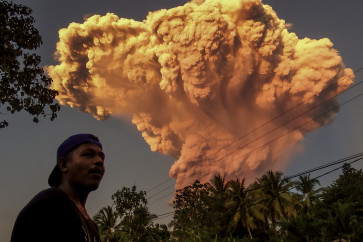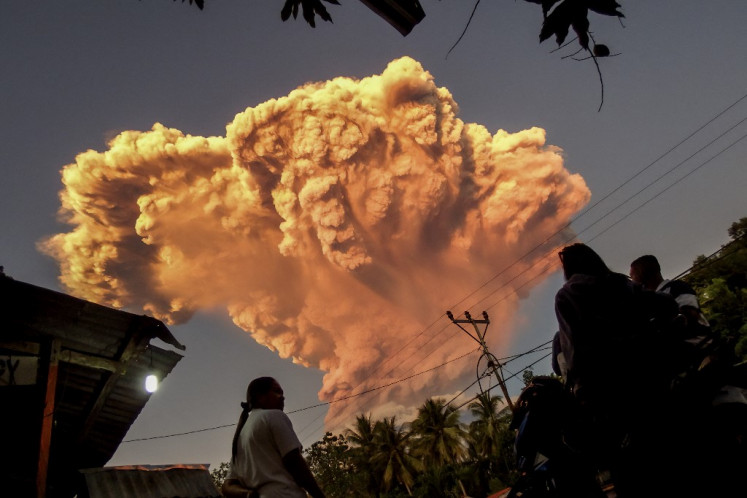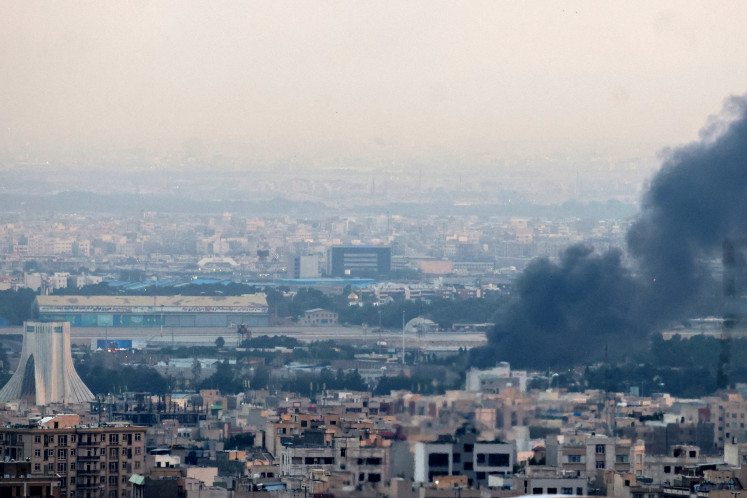Popular Reads
Top Results
Can't find what you're looking for?
View all search resultsPopular Reads
Top Results
Can't find what you're looking for?
View all search resultsBorobudur temple clean up begins
After a series of delays, the management of the ancient Buddhist temple Borobudur, in Magelang, Central Java, began the process of cleaning up volcanic ash from the temple grounds on Friday, hoping to complete the operation in less than a month
Change text size
Gift Premium Articles
to Anyone

A
fter a series of delays, the management of the ancient Buddhist temple Borobudur, in Magelang, Central Java, began the process of cleaning up volcanic ash from the temple grounds on Friday, hoping to complete the operation in less than a month.
“We will first remove the ash from the [temple] structure with brushes and spatulas. After that, we will cover the important parts of the temple, like the stupas and the statues,” Borobudur Heritage Conservation Office (BKPB) official Iskandar M. Siregar, who leads the mission, told The Jakarta Post.
When the Merapi eruptions fully end, we will finally wash them with water,” he added.
According to Iskandar, at least 60 officers from the office had been deployed to clean up the 120-by-120-meter temple, built between the eighth and ninth century by the Sailendra dynasty.
The office had also prepared more than 1 square kilometer of plastic tarp necessary to cover certain parts of the temple.
Iskandar, however, denied critics’ accusations that the management has been too slow in “saving the temple.”
“Before starting the cleanup mission, we needed a few days to first conduct preliminary research to decide the best method for rescuing the temple,” he said.
Located 35 kilometers from Mt. Merapi in Yogyakarta, the temple has been covered by a thick layer of ash since last Friday, one day after the volcano erupted and spewed ash onto several neighboring cities, including Magelang.
The management company immediately closed the temple to the public due to ash on the temple grounds. Since early this week, it has deployed dozens of employees from its headquarters in Yogyakarta to help workers at Borobudur clean the 80-hectare park that encircles the temple.
Several workers were seen cleaning stupas around the top of the temple on Friday afternoon, while several others sprayed liquid chemicals on some of the unaffected parts of the temple.
“The liquid will neutralize the corrosive effect of the volcanic ash [on the temple’s stones],” a worker said.
Borobudur is the largest Buddhist temple in the world. It has become one of Indonesia’s main tourist attractions, and is visited by more than 2 million local and international tourists annually.
The temple was also once acclaimed as one of the world’s seven man-made wonders.
The temple features a staggering 2,672 relief panels, many exquisitely detailed, as well as 504 statues of Buddha.
At the summit, a gigantic central stupa rests on a massive lotus-shaped base a half-meter thick.
Experts have repeatedly expressed concern over damage caused by acid rain, which has damaged some of the temple’s carvings, and from global warming, which might produce fissures and cracks in the temple’s stones.
Many foreign archaeologists had expressed their willingness to help local authorities in cleaning up Borobudur, BPKB chief Marsis Sutopo said.









